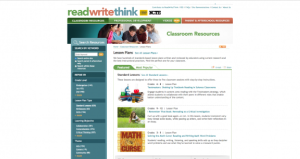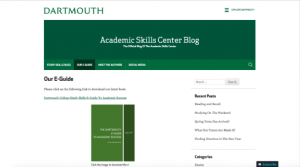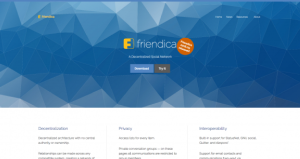General Interest
Back to Top
|
 |
|
Patriot Nations: Native Americans in Our Nation's Armed Forces
|
Social studies |
|
As the digital exhibit Patriot Nations points out, "Native Americans have served in our nation's military since colonial times ... [y]et they remain unrecognized by any landmark in our nation's capital." This deficiency is in the process of changing, and a national Native American Veterans Memorial is due to be unveiled in late 2020. In the meantime, Patriot Nations, created by the Smithsonian Institute's National Museum of the American Indian, offers virtual visitors a chronological overview of Native peoples' valuable contributions to US military history. Through photographs and text, this exhibit remembers and acknowledges tribal members' service to the United States throughout the country's history, beginning in 1775 with the Revolutionary War and continuing into the present day. Examples include code talkers in World Wars I and II, the government-run American Indian boarding schools which became targets for military recruitment in the late nineteenth and early twentieth centuries, and the 42,000 American Indians who served in the US military during the Vietnam War. This exhibit also touches on the importance of Native American cultural practices to their veterans. [JDC] |
|





|
|
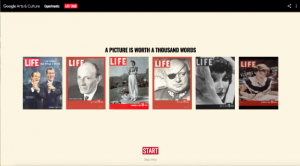 |
|
Google Arts & Culture: Life Tags
|
Arts |
|
For decades, the American magazine Life was a major player in the development of photojournalism and produced millions of iconic photographs, leaving behind a staggeringly large archive. In March 2018, Google Arts & Culture released Life Tags, a project that "organizes [about 6.5] million images from the Life magazine archives into an interactive encyclopedia using machine learning." This vast searchable archive employs an array of interesting tags, ranging from mundane objects like "coffeemaker" to intriguing entries like "weedy seadragon," which visitors can use to explore the images. As Google explains in Life Tags' opening intro, its artificial intelligence algorithm automatically tagged and cataloged all the items it recognized in the images, which has led to some amusing miscategorizations, such as piano keyboards that show up under the "computer" tag. Regardless, this resource offers a fun way to explore an influential part of American history. [JDC] |
|





|
|
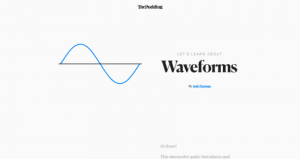 |
|
Let's Learn About Waveforms
|
Science |
|
What are waveforms, and how can we interpret them? Is "amplitude" the same thing as "loudness"? What are harmonics, and how do they influence sound? Software developer Josh Comeau has created this helpful and highly engaging interactive tutorial about audio waveforms for The Pudding. As visitors explore this tutorial, they are presented with a number of graphs (many of them interactive) that illustrate concepts such as displacement, frequency, amplitude, harmonics, and phrase. Several of these graphs are accompanied by sound, allowing visitors to experience how each of these properties impacts what we hear. Visitors also have the option of muting sound on the tutorial and may adjust the volume to their preference. As Comeau writes in his introduction, "[t]his guide is aimed at a general audience-no prior knowledge is required. It may be of particular interest to musicians, producers, and aspiring audio engineers, but it's designed to be accessible to everyone!" [MMB] |
|





|
|
 |
|
 |
|
 |
|
The Radio Adventures of Eleanor Amplified
|
Arts |
|
Launched in 2016, the podcast The Radio Adventures of Eleanor Amplified describes itself as "an adventure series for the whole family." This audio drama centers around its main character, a "world-famous" radio reporter named Eleanor Amplified, who "foils devious plots and outwits crafty villains, all in pursuit of the big story." Eleanor Amplified was created by NPR's John Sheehan, a former producer for Fresh Air, who said that in creating this podcast he wanted "to make kids' content that adults could also enjoy." This old-school radio drama is both fun and educational, and its episodes are typically 10-15 minutes long. The podcast has also published two Road Trip Editions that consolidate an entire season into a single-chaptered download, perfect for those long drives. Written primarily for kids aged 8-12, but delightful at any age,Eleanor Amplified is produced by the Philadelphia public radio station WHYY and has been featured on Amy Poehler's Smart Girls. [JDC] |
|





|
|
 |
|
Cartoon Abstracts
|
Science |
|
Science provides endless fodder for fascination but its research publications can sometimes be intimidating for general audiences. Cartoon Abstracts offers one possible way to bridge that gap by presenting the research article's summary in a creative and highly visual format. Cartoon Abstracts is an initiative launched in 2015 by Taylor & Francis, the international publisher of more than 2,700 academic journals. Here, readers can browse through 54 cartoon abstracts from a range of disciplines and topics, with titles such as "Surviving a Global Zombie Attack," "The Name's Jamesbondia: New Group of Caribbean Plants," and "Are Comics a Good Medium for Science Communication?" Each title's link leads to its entry in a 57-page digital magazine of all the cartoon abstracts, which readers may also download as a PDF. As the publisher explains, these fun and engaging "[i]llustrations can aid the understanding of difficult concepts, broaden the appeal of niche topics, and help transcend language barriers." This collection is well worth checking out. [JDC] |
|





|
|
 |
|
Embracing Britishness: musings on biscuit lettering culture
|
Social studies |
|
"Embracing Britishness: musings on biscuit lettering culture" is a post by Elena Veguillas on Alphabettes.org: "a showcase for work, commentary, and research on lettering, typography, and type design." "Embracing Britishness" runs about 2,000 words and is an enjoyable read with lots of illustrations. In the post, Veguillas elucidates on a number of assertions, including "biscuits are THE British culture; biscuits can create a national debate; and biscuits can cause a national crisis," (as in, the biscuit shortage of 2016). The post concludes with an exposition on biscuit classification, both as to the type of biscuit (dunker, shortcake, digestives, jam-filled, etc), but also in terms of typography. Veguillas arranges these in a taxonomy of letterforms from sans-ish to art deco-ish, and from bold to thin. This blog is recommended for baking enthusiasts and anyone who finds themselves performing a search when trying to determine the types of biscuits being consumed by a British book's characters. [DS] |
|





|
|



